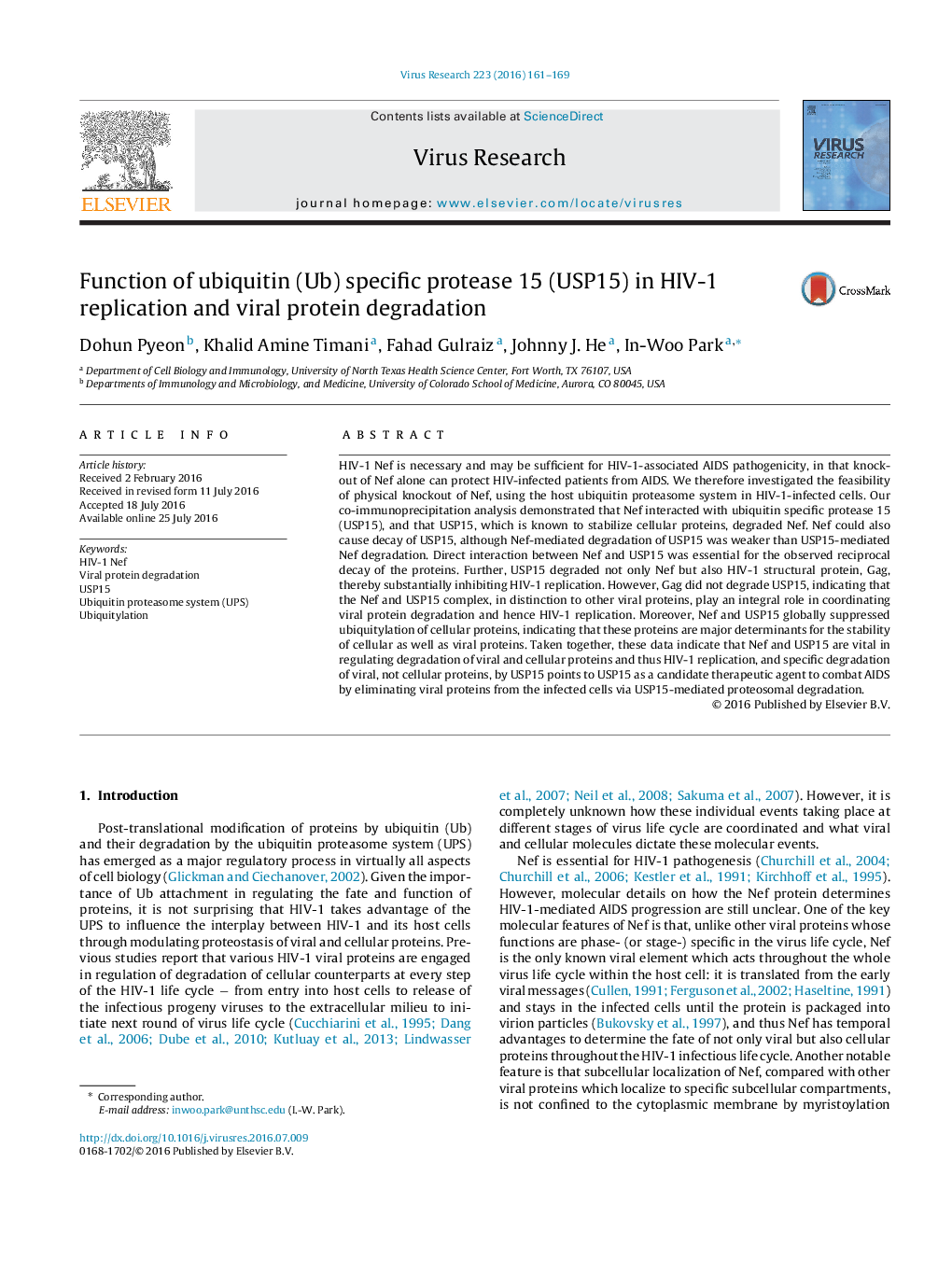| Article ID | Journal | Published Year | Pages | File Type |
|---|---|---|---|---|
| 6142031 | Virus Research | 2016 | 9 Pages |
Abstract
HIV-1 Nef is necessary and may be sufficient for HIV-1-associated AIDS pathogenicity, in that knockout of Nef alone can protect HIV-infected patients from AIDS. We therefore investigated the feasibility of physical knockout of Nef, using the host ubiquitin proteasome system in HIV-1-infected cells. Our co-immunoprecipitation analysis demonstrated that Nef interacted with ubiquitin specific protease 15 (USP15), and that USP15, which is known to stabilize cellular proteins, degraded Nef. Nef could also cause decay of USP15, although Nef-mediated degradation of USP15 was weaker than USP15-mediated Nef degradation. Direct interaction between Nef and USP15 was essential for the observed reciprocal decay of the proteins. Further, USP15 degraded not only Nef but also HIV-1 structural protein, Gag, thereby substantially inhibiting HIV-1 replication. However, Gag did not degrade USP15, indicating that the Nef and USP15 complex, in distinction to other viral proteins, play an integral role in coordinating viral protein degradation and hence HIV-1 replication. Moreover, Nef and USP15 globally suppressed ubiquitylation of cellular proteins, indicating that these proteins are major determinants for the stability of cellular as well as viral proteins. Taken together, these data indicate that Nef and USP15 are vital in regulating degradation of viral and cellular proteins and thus HIV-1 replication, and specific degradation of viral, not cellular proteins, by USP15 points to USP15 as a candidate therapeutic agent to combat AIDS by eliminating viral proteins from the infected cells via USP15-mediated proteosomal degradation.
Keywords
Related Topics
Life Sciences
Immunology and Microbiology
Virology
Authors
Dohun Pyeon, Khalid Amine Timani, Fahad Gulraiz, Johnny J. He, In-Woo Park,
